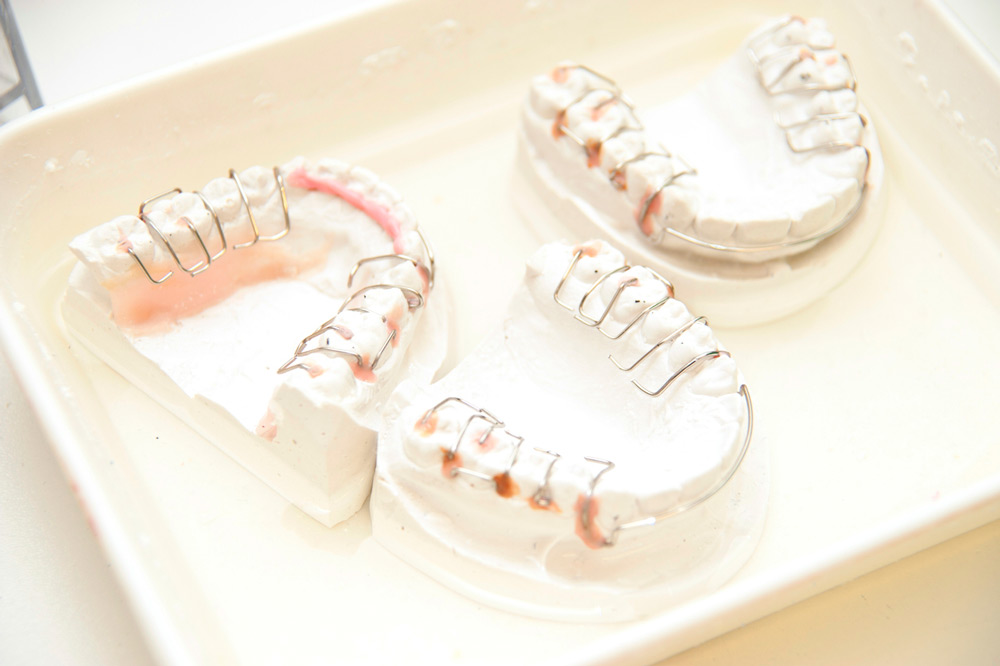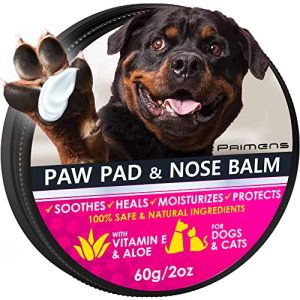Contents
- What Is a Nance Appliance?
- Determining the Need for a Nance Appliance
- Getting a Nance Appliance
- Wearing and Maintaining the Nance Appliance
- Duration of Nance Appliance Treatment
- Possible Challenges and Solutions
- Effectiveness and Success Rate
- Alternatives to Nance Appliance
- Cost and Insurance Coverage
- Important Considerations
If you’re considering orthodontic treatment, you may have come across the Nance Appliance. Designed to correct bite issues and prevent teeth from shifting, the Nance Appliance is a popular choice for orthodontic patients. In this guide, we’ll explore everything you need to know about the Nance Appliance, including how it works, its benefits, and what to expect during treatment. With this comprehensive resource, you can make an informed decision about whether the Nance Appliance is right for you. So let’s get started on your journey to a straighter and healthier smile!
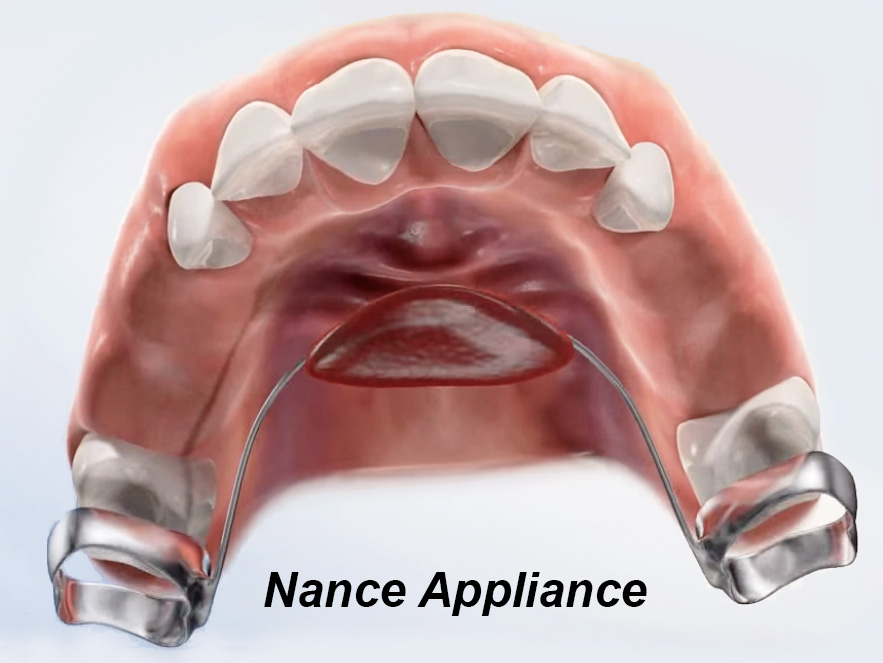
What Is a Nance Appliance?
A Nance appliance, also known as a palatal arch appliance or simply a Nance, is a type of orthodontic appliance used to correct certain dental conditions. It is a fixed dental appliance that is typically used in conjunction with braces or other orthodontic treatments. The Nance appliance is designed to prevent unwanted movement of the molars and to create space in the mouth for alignment of the teeth. It is most commonly used in the treatment of overcrowding, palate expansion, and teeth alignment issues.
Definition and Purpose
The Nance appliance is named after Dr. Charles J. Nance, who first invented it in the 1950s. It is a custom-made orthodontic device that is made of stainless steel or acrylic material. It consists of a metal or acrylic archwire that is attached to bands or brackets on the upper molars at the back of the mouth. The archwire extends across the palate, creating a small space between the appliance and the roof of the mouth.
The purpose of the Nance appliance is to maintain the width of the upper arch and prevent it from contracting. By preventing the molars from moving forward, it also prevents the loss of space that can occur during orthodontic treatment. This allows the orthodontist to create sufficient space for aligning the teeth properly. The Nance appliance helps to stabilize the upper arch, correct crossbites, and promote proper alignment of the upper teeth.
Components of a Nance Appliance
A Nance appliance consists of several components that work together to achieve its purpose. The main components of a Nance appliance include:
-
Bands or brackets: These are metal rings or plates that are cemented onto the upper first molars to provide anchorage for the appliance.
-
Palatal archwire: This is a thin metal wire that extends across the roof of the mouth. It connects the bands or brackets on the upper molars and helps to maintain the width of the upper arch.
-
Acrylic button: The acrylic button is a small piece of acrylic material that is attached to the palatal archwire. It helps to prevent the molars from moving forward and provides stability to the appliance.
How It Works
The Nance appliance works by exerting gentle pressure on the molars, preventing them from moving forward. This helps to maintain the width of the upper arch and create space for aligning the teeth properly. The acrylic button, when properly positioned, acts as a barrier that prevents the molars from drifting forward. The palatal archwire provides stability and support to the appliance, ensuring that it remains in place throughout the course of treatment.
By keeping the molars in their correct positions, the Nance appliance helps to correct crossbites and align the upper teeth. It also prevents unwanted movement of the molars during orthodontic treatment, ensuring that the teeth remain in the desired positions. Overall, the Nance appliance plays a crucial role in achieving successful orthodontic outcomes and creating a healthy and beautiful smile.
Determining the Need for a Nance Appliance
Before undergoing treatment with a Nance appliance, an evaluation by an orthodontist is necessary to determine whether it is appropriate for your specific orthodontic needs. The orthodontist will carefully examine your teeth, bite, and jaw structure to assess the nature and severity of your orthodontic issues.
Evaluation by Orthodontist
During the evaluation, the orthodontist will take dental impressions, photographs, and X-rays of your teeth and jaws. These records will provide the orthodontist with a detailed understanding of your dental anatomy and the specific issues that need to be addressed. They will then assess various factors such as teeth alignment, jaw growth, and bite discrepancies to determine whether a Nance appliance is the right treatment option for you.
Orthodontic Issues That May Require a Nance Appliance
There are several orthodontic conditions that may require the use of a Nance appliance. Some of the common issues that can be addressed with a Nance appliance include:
-
Overcrowded teeth: When there is limited space in the mouth, the Nance appliance helps create room by preventing the molars from moving forward and closing the gaps needed for alignment.
-
Crossbites: A crossbite occurs when the upper teeth bite inside the lower teeth. The Nance appliance plays a role in correcting this bite discrepancy by maintaining the width of the upper arch and allowing the upper teeth to align properly.
-
Palate expansion: In cases where the upper arch is narrow, the Nance appliance can be used to widen the palate and create more space for proper alignment of the teeth.
Benefits of Using a Nance Appliance
Using a Nance appliance as part of your orthodontic treatment can offer several benefits. These include:
-
Maintaining arch width: The Nance appliance helps to prevent the contraction of the upper arch, ensuring that there is sufficient space for aligning the teeth properly.
-
Stabilizing molars: By preventing the molars from moving forward, the Nance appliance provides stability to the posterior teeth and allows for better control during orthodontic treatment.
-
Correcting crossbites: The Nance appliance is effective in correcting crossbites, ensuring that the upper teeth align properly with the lower teeth.
-
Facilitating proper alignment: The Nance appliance creates space in the mouth, allowing for the proper alignment of teeth even in cases of overcrowding.
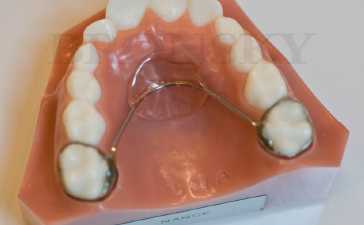
Getting a Nance Appliance
If the orthodontist determines that a Nance appliance is necessary for your treatment, the process of getting one typically involves several steps.
Orthodontic Consultation
The first step is to schedule an orthodontic consultation with an orthodontist who specializes in the use of Nance appliances. During this consultation, the orthodontist will evaluate your orthodontic needs, explain the treatment plan, and discuss the benefits and potential risks associated with using a Nance appliance. This is also an opportunity for you to ask any questions or express any concerns you may have.
Taking Impressions and Measurements
Once the decision to proceed with a Nance appliance is made, the orthodontist will take dental impressions of your teeth and jaws. This involves biting into a tray filled with a soft, putty-like material that creates an exact replica of your dental arches. These impressions will be used to create a custom-made Nance appliance that fits your mouth perfectly.
Measurements of your teeth and jaws may also be taken to ensure proper alignment of the Nance appliance. The orthodontist will use these measurements to determine the appropriate size and shape of the appliance for your specific needs.
Customization and Fabrication
Based on the dental impressions and measurements taken, the Nance appliance will be custom-made specifically for you. Dental technicians will use the impressions to create a model of your mouth, and the Nance appliance will be constructed on this model. The appliance will be made from high-quality materials that are both durable and safe for oral use.
Fitting the Nance Appliance
Once the Nance appliance has been fabricated, you will return to the orthodontist’s office for the fitting appointment. During this appointment, the orthodontist will carefully place the appliance in your mouth and make any necessary adjustments to ensure a proper fit. The bands or brackets will be cemented onto the upper molars, and the palatal archwire with the acrylic button will be positioned correctly to provide the desired orthodontic effects.
The orthodontist will then provide you with detailed instructions on how to care for the Nance appliance and what to expect during the initial period of adjustment.
Wearing and Maintaining the Nance Appliance
Once the Nance appliance is fitted, you will need to wear it consistently as directed by your orthodontist. Proper care and maintenance of the appliance are essential to ensure its effectiveness and prevent any complications.
Initial Discomfort and Adjustment Period
It is normal to experience some initial discomfort and difficulty speaking or eating after the Nance appliance is first placed. This is because your mouth needs time to adjust to the presence of the appliance. However, discomfort and speech difficulties should gradually diminish as you become accustomed to wearing the appliance.
Oral Hygiene Practices
Maintaining good oral hygiene is crucial while wearing a Nance appliance. You will need to continue brushing your teeth thoroughly at least twice a day, making sure to clean around the appliance and underneath the wire. It is important to use a soft-bristled toothbrush and fluoride toothpaste to prevent plaque buildup and tooth decay.
In addition to brushing, you should also floss daily to remove any food particles that may become trapped around the Nance appliance. Your orthodontist may recommend using special floss threaders or interdental brushes to assist with cleaning around the appliance.
Eating and Drinking with a Nance Appliance
While wearing a Nance appliance, you will need to make some adjustments to your eating habits. It is important to avoid sticky or hard foods that can potentially dislodge or damage the appliance. Chewing gum, candy, and crunchy snacks should also be avoided to prevent any complications.
Drinking sugary or carbonated beverages should be done in moderation, as these can increase the risk of tooth decay and damage to the Nance appliance. It is recommended to drink through a straw to help minimize contact between the beverage and the teeth.
Speech Implications
Initially, the Nance appliance may cause slight changes in your speech, such as a lisp or difficulty pronouncing certain sounds. This is a normal part of the adjustment period, and with time, your speech will improve as your mouth adapts to the presence of the appliance. Practicing speaking aloud and reading aloud can help speed up the adjustment process.
Regular Check-ups and Adjustments
During your orthodontic treatment with a Nance appliance, it is important to attend regular check-up appointments with your orthodontist. These appointments allow the orthodontist to monitor your progress, make any necessary adjustments to the appliance, and address any concerns or issues you may have. The frequency of these appointments will vary depending on your treatment plan and individual needs.
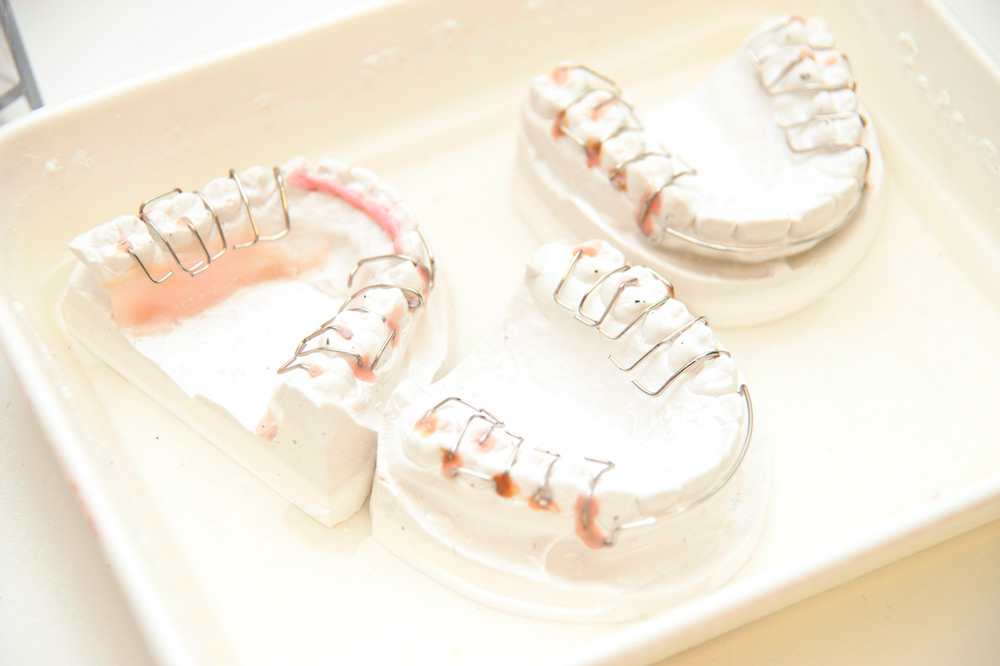
Duration of Nance Appliance Treatment
The duration of treatment with a Nance appliance can vary depending on the specific orthodontic issues being addressed and the individual patient. It is important to follow your orthodontist’s instructions and wear the appliance for the recommended duration to achieve the desired results.
Typical Treatment Timeline
On average, the use of a Nance appliance can range from several months to a year or more. During this time, the orthodontist will closely monitor the progress of your treatment and make any necessary adjustments to the appliance. The duration of treatment may be shorter for some patients with minor orthodontic issues, while others with more complex cases may require a longer treatment period.
Factors Affecting Treatment Duration
Several factors can influence the duration of Nance appliance treatment. These factors may include the severity of the orthodontic issues being addressed, the age of the patient, and the patient’s compliance with wearing the appliance as directed. In some cases, additional orthodontic treatment, such as braces or other appliances, may be required after the completion of Nance appliance treatment to achieve optimal results.
Possible Challenges and Solutions
While wearing a Nance appliance, you may encounter certain challenges or issues. However, many of these challenges can be addressed with proper care and maintenance. Here are a few common challenges and their potential solutions:
Speech Difficulties
Some patients may experience temporary speech difficulties when wearing a Nance appliance. This is usually due to the presence of the appliance in the mouth and can be resolved through practice and adaptation. Regularly speaking aloud, reading aloud, and practicing sounds can help improve speech clarity and speed up the adjustment process.
Discomfort or Irritation
Initially, the Nance appliance may cause some discomfort or irritation in the mouth. This is normal and typically subsides as your mouth adapts to the appliance. If the discomfort persists or becomes unbearable, contact your orthodontist for further evaluation. They may be able to make adjustments to the appliance to improve its comfort.
Loose or Broken Wire
Occasionally, the archwire or bands of the Nance appliance may become loose or broken. If this occurs, it is important to contact your orthodontist as soon as possible. They will determine the appropriate course of action and will either repair or replace the damaged component to ensure the appliance continues to function effectively.
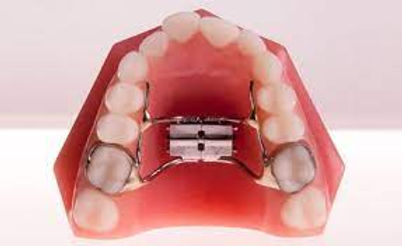
Effectiveness and Success Rate
The use of a Nance appliance as part of orthodontic treatment has been proven to be effective in achieving desired dental and skeletal changes. However, the success rate may vary depending on the specific orthodontic issues being addressed and the patient’s compliance with wearing the appliance as directed.
Orthodontic Outcomes
When used appropriately and in conjunction with other orthodontic treatments, the Nance appliance can help achieve favorable outcomes in terms of tooth alignment, arch width maintenance, and correction of crossbites. The appliance serves as an important auxiliary tool in achieving a properly aligned and functioning bite.
Patient Satisfaction
Many patients who have undergone treatment with a Nance appliance report high levels of satisfaction with the results achieved. The appliance can help improve not only the appearance of the smile but also the functionality and overall oral health. Patients often experience improved chewing efficiency, better oral hygiene, and increased self-confidence as a result of successful Nance appliance treatment.
Alternatives to Nance Appliance
While the Nance appliance is a widely used and effective orthodontic tool, there are alternative appliances and treatment options available depending on the specific orthodontic needs of the patient.
Different Types of Orthodontic Appliances
Braces: Traditional braces consist of metal or ceramic brackets that are bonded to the teeth and connected by archwires. They are a common option for comprehensive orthodontic treatment and can address a wide range of dental issues.
Invisalign: This is a system of clear aligners that gradually move the teeth into proper alignment. Invisalign is a popular option for patients who prefer a more discreet and removable orthodontic treatment.
Expanders: Palatal expanders are used to widen the upper arch and create space for proper alignment of the teeth. They can be an alternative to the Nance appliance in cases where significant palatal expansion is required.
Comparison with Other Appliance Options
The choice between a Nance appliance and alternative treatment options depends on the specific orthodontic needs, treatment goals, and the recommendation of the orthodontist. Each treatment option has its advantages and limitations, and the orthodontist will determine the most appropriate option based on a thorough evaluation and assessment of the individual case.

Cost and Insurance Coverage
The cost of Nance appliance treatment can vary depending on several factors, including the complexity of the orthodontic issues being addressed, the geographic location of the orthodontic practice, and the individual orthodontist’s fees.
Average Cost of Nance Appliance Treatment
On average, the cost of a Nance appliance can range from $500 to $2,500. However, it is important to note that this price does not include the overall cost of orthodontic treatment, which may include other appliances or braces, as well as regular check-up appointments and adjustments.
Insurance Coverage Options
Many dental insurance plans cover orthodontic treatment, including the use of a Nance appliance. It is important to review your insurance policy or speak with your insurance provider to understand the coverage and any associated limitations or requirements. Your orthodontist’s office can also assist in verifying insurance benefits and providing the necessary documentation for claim submission.
Financing and Payment Plans
If your insurance coverage is limited or does not cover orthodontic treatment, many orthodontic practices offer financing options or payment plans to help make treatment more affordable. These options may allow you to spread out the cost of treatment over a period of time, making it more manageable for your budget. Discuss your financial concerns with your orthodontist’s office to explore these options and determine the best payment plan for your needs.
Important Considerations
Before embarking on Nance appliance treatment, there are several important considerations to keep in mind. These factors can affect the suitability and outcome of your orthodontic treatment.
Age Suitability
The Nance appliance is commonly used in children and teenagers whose jaws are still growing. However, it can also be used in adults in certain cases. The suitability of the Nance appliance for a specific age group will depend on the individual case and the orthodontist’s recommendation.
Potential Side Effects
As with any orthodontic treatment, there may be potential side effects associated with wearing a Nance appliance. These can include temporary discomfort, irritation of the cheeks or palate, speech difficulties during the adjustment period, and difficulty cleaning around the appliance. Most of these side effects are temporary and resolve as the mouth adapts to the appliance.
Maintaining Oral Health During Treatment
Proper oral hygiene practices are essential during Nance appliance treatment to prevent tooth decay, gum disease, and other oral health issues. Regular brushing, flossing, and maintaining a healthy diet are important for maintaining good oral health. Your orthodontist will provide specific instructions on how to care for your teeth and the Nance appliance, and it is important to follow these guidelines carefully.
In conclusion, the Nance appliance is a valuable orthodontic appliance that can aid in the treatment of various dental conditions, such as overcrowded teeth, crossbites, and palate expansion. By maintaining arch width and stabilizing the molars, the Nance appliance helps achieve proper alignment and functional bites. If recommended by your orthodontist, the Nance appliance can be an effective and beneficial tool in achieving a healthy and beautiful smile.

